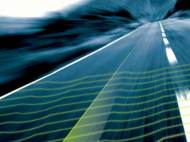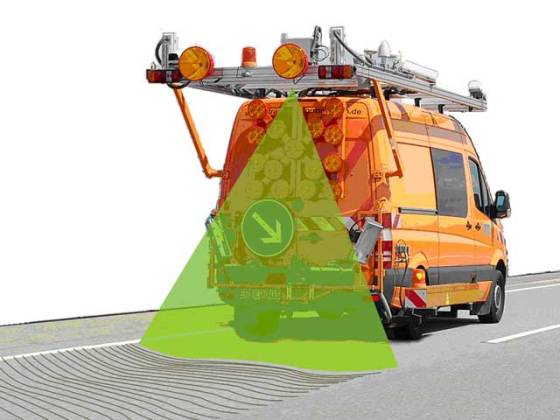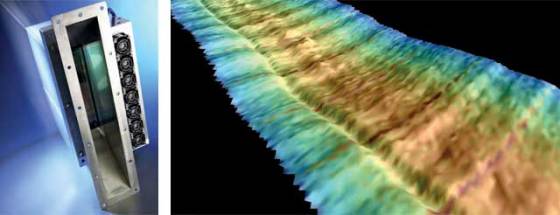Faster and more precise way to scan road surface
 Surveying the damage weather and land moving caused to asphalt and concrete on roads is tedious and expensive. When it comes to Germany, which has roads worth around 470 billion euros, it is not a small endeavor to perform such a task. Researchers at Fraunhofer Institute opted for a surveying system with a laser scanner which is faster, more precise and costs less.
Surveying the damage weather and land moving caused to asphalt and concrete on roads is tedious and expensive. When it comes to Germany, which has roads worth around 470 billion euros, it is not a small endeavor to perform such a task. Researchers at Fraunhofer Institute opted for a surveying system with a laser scanner which is faster, more precise and costs less.
Unlike Georgia Tech researchers who developed an automated system able to detect cracks in pavement and seal them, the system developed by the Laser Scanning research group at the Fraunhofer Institute for Physical Measurement Techniques (Fraunhofer IPM) employs lasers to measure the evenness of the road surface.
Named Pavement Profile Scanner (PPS), the device relies on technology which has already proved its worth in railroad measurement applications. A single high-resolution laser scanner is all that is needed to scan and measure the road surface across a span of four meters (13.12 feet) with a laser beam. The scanner, which is no bigger than a shoe box, is fixed to the measurement vehicle at a height of three meters (9.84 feet). Even standard vehicles can serve for measurement, making the system easily usable.
An octagonal mirror construction rotates inside the scanner and steers the laser beam across the road perpendicular to the direction the vehicle is traveling in. An acquisition angle of 70 degrees enables the device to scan the entire width of any road which is up to four meters wide. The signal is reflected from the asphalt back to the scanner, where it hits a detector chip. The distance between the scanner and the surface of the road can be inferred from how long it takes the laser light to travel back, and measurements are accurate to between 0.15 and 0.3 millimeters (0.059 and 0.012 inches).
Unlike conventional measurement equipment, there is no need for broad attachments to be fitted to the vehicle. It must merely be ensured that the orientation and position of the measurement vehicle is known – an easy task for Global Navigation Satellite System (GNSS) and an inertial measurement system. According to its, developers, the measurements of the system are unaffected by external light conditions and can be executed at speeds of up to 100 km/h (62 mph).
The IPM’s Pavement Profile Scanner (PPS) has already passed initial field tests. In cooperation with road surveyors from the firm LEHMANN + PARTNER GmbH, the IPM has scanned a total of 15,000 kilometers of highway and other major roads across Germany since last summer. In spring the measurement professionals will be scanning the runways at Hamburg Airport.
“The Federal Highway Research Institute laid down strict criteria before licensing the scanner on public roads: it not only had to be accurate to 0.3 millimeters, it also had to be safe for the eyes. This means that even if someone ended up looking into the laser for longer than necessary, it would not put their eyes at risk. The development partners’ technology easily cleared both hurdles”, said Dr. Dirk Ebersbach, CEO of LEHMANN + PARTNER. “The average service life of a road is around 30 years, and the asphalt surfacing rarely lasts more than twelve. Unevenness and damage such as ruts must be identified at an early stage in order to prevent damage to the layers beneath by means of timely repair work.”
Meanwhile, Fraunhofer IPM researchers are refining the laser scanner to fine-tune the measuring accuracy. The prototype of the new scanner version measures at a frequency of 2 MHz, thus ensuring two million measurements per second. The current model works at half the frequency, thus ensuring “mere” 1 million measurements per second.
“In future, we want to go beyond surveying the evenness of a road and also detect tiny cracks in a targeted manner, which is a better way of preventing damage. Until now, this work has been carried out using cameras”, said Dr. Alexander Reiterer, head of the Laser Scanning research group.











Leave your response!